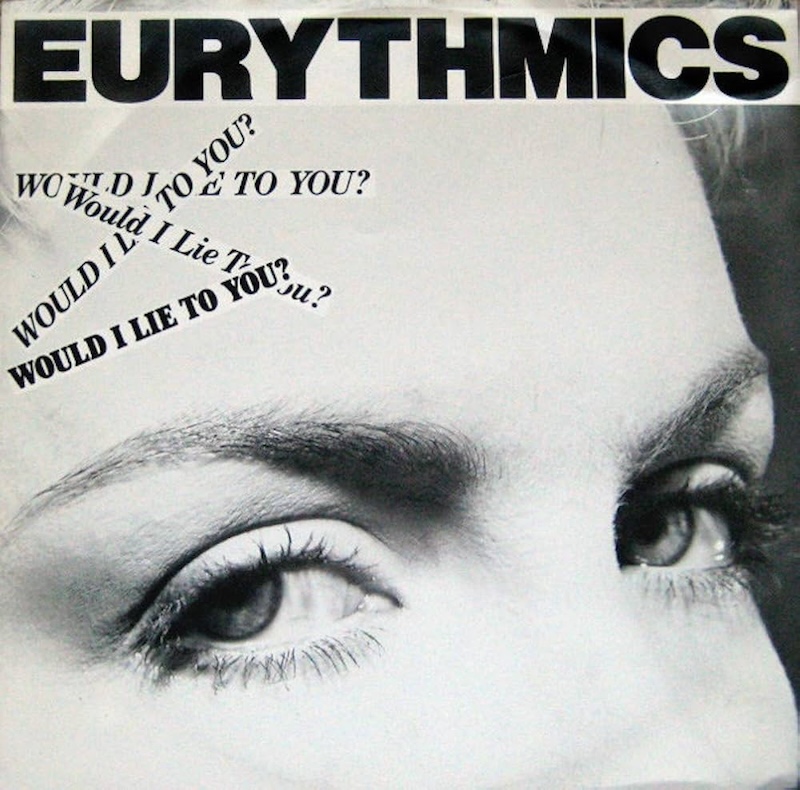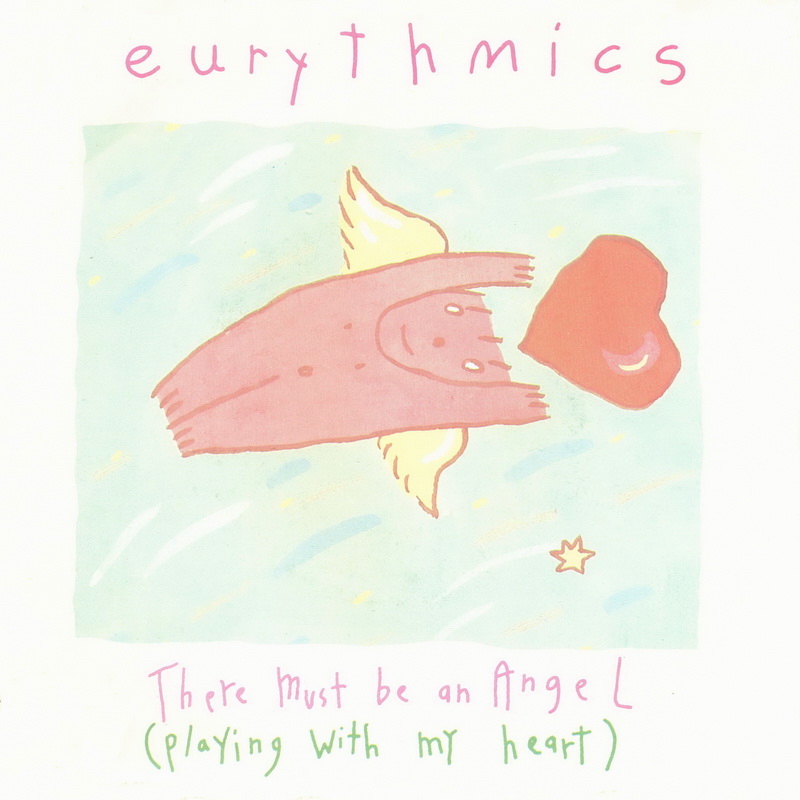Annie Lennox and Dave Stewart’s fourth studio LP is a vibrant blend of soul and synth-pop that sounds as uplifting and inspiring as it did in 1985

Be Yourself Tonight, the Eurythmics’ fourth studio album, sees the duo on fine form, supplementing the trademark synths and drum machines with a raw, tooled-up update of the Motown sound
The onset of 1985 found Eurythmics in a commercial sweet spot as they rode a wave of successive hits on the global stage. It was barely two-and-a-bit years since Sweet Dreams (Are Made Of This) in January 1983 had put Annie Lennox and Dave Stewart on the map. In this brief timespan, the duo had morphed from synth-pop antiheroes – very much encompassing the outsider mentality – to now fully embracing their newly-achieved diva and rock star personalities. Of course, that underdog dynamic becomes increasingly untenable the more successful an act gets; something they were no doubt aware of themselves. It was adapt or die, and so their upward career trajectory was propelled forward by a necessary progression in sound and style.
The first half of the 80s was a prolific period for the duo – five studio albums in as many years (including 1984’s soundtrack effort 1984), plus various live and remix records, rush-released to capitalise on the boom. In the fleeting world of pop, it was very much a case of striking while the iron’s hot. And throughout this period, Eurythmics were one of the hottest prospects coming out of Britain.

Organic Aesthetic
To some extent, Be Yourself Tonight picks up where 1983’s Touch left off, though moving further away from their synth-pop origins and adopting a more organic band aesthetic. The steely synths that characterised their initial success are still present, but tempered with the introduction of live drums, funky horns and Dave Stewart’s dynamic electric guitar.
The rhythm section comprising bassist Dean Garcia (returning from Touch) and drummer Olle Romo (a new addition, largely supplanting the drum machines of old) provide the backbone that underpins the record. A formidable presence and key to the album’s sound, they are tight enough to play it loose, injecting a spirited human rawness into the music. The result is a warmer, fuller and more muscular sound.
Eurythmics first LP, In The Garden, recorded with Conny Plank in Cologne, clearly took its roots from German art rock. They then found success in creating a very English synth-pop sound. Be Yourself Tonight sees the two Brits taking on the US heartland. The record is clearly indebted to the late 60s sounds of Motown and Stax, echoing that soulful approach in the vocal arrangements, use of horns and syncopated rhythms. But, far from mere throwback pastiche, Stewart’s modern production style helped to create something that felt very fresh and on the pulse.
Be My Guest Tonight
A sign of the Eurythmics’ rising currency among the pop glitterati, Be Yourself Tonight is a star-studded affair, with an impressive roll call of A-listers lining up for a piece of the action. Aretha Franklin, Stevie Wonder, Elvis Costello and various members of the Heartbreakers (sans Tom Petty) all make appearances. Blondie’s Clem Burke even crops up behind the drumkit in one of the promos, though – on this occasion – he doesn’t actually play on the recording itself.
The coup demonstrates Eurythmics’ great pulling power at this point – in itself a humblebrag of sorts: “Look who we can get on our record!” Aligning themselves with the established American big hitters lends further credibility to the sound they helped to inspire.
Meanwhile, they are joined by top-flight bassist Nathan East (who would later play on Michael Jackson’s I Just Can’t Stop Loving You, and Daft Punk’s ubiquitous Get Lucky), as well as Michael Kamen, who provided the string arrangements.
By now, Stewart was blossoming into his new role as go-to producer for the stars, with The Undertones’ Feargal Sharkey’s solo debut album and Tom Petty’s Southern Accents both delivered in the same year.

Let’s Rock
On his own record, he demonstrates a growing confidence, allowing that previously-suppressed part of his personality to come to the fore. The devil on his shoulder is whispering: “Put that synthesizer away, Dave, it’s OK to be playing guitar again…” And he duly obliges.
And so, he positively embraces the rock star histrionics that the pair had turned away from upon initial success. The cold, insular persona, previously cultivated, is opened out into an explicitly rock approach – tooled up, confident and comfortable in flexing its muscles, playing up to the pomp excesses of the era in sound and image. This is boys and girls celebrating their individual status: as Stewart indulges in the exaggerated rock god persona, Lennox consciously adopts a more outwardly feminine look – a contrast to the intentionally ambiguous androgynous image on which she made her name.
Simultaneously, the singer continued to develop and evolve as a lyricist. While she always had a powerful and mesmerising presence, her words seem to come from a position of renewed strength. She’s still exploring that fertile ground around the powerplays in relationships, and dealing with being scorned, but with less fragility. Take, say, Here Comes The Rain Again, the opener from their previous LP – undoubtedly among their very best work, though lyrically dealing with a sense of foreboding darkness and insecurity, fear of an uncertain future; and compare that with Sisters Are Doin’ It For Themselves, a self-confident anthem that boldly asserts a positive message for the here and now.
Up The Bracket
Another quirk of Annie’s lyrical themes: it doesn’t escape notice that this album has very long titles (with equally long subtitles in brackets). This all plays into the sense of bombast. Lennox seems to be coming from the Bernie Taupin School of Song Titles and Composition. Taupin once said something to the effect of: “Give a song a great title and you’re already off to a good start” – in other words, make it epic and something that sounds thrilling when called out by a radio DJ, or reads like a classic staple on a jukebox.
Despite the American influence, principal tracking for the album was actually recorded in Paris, with additional work completed in LA. As the pair evolved as artists, they developed a knack for working quickly – laying down complex arrangements while moving fast and, in doing so, retaining the life and freshness. As with their approach on Touch, they achieve an accomplished production, without sounding overly-engineered, capturing the energy of the performance.
Sisters Are Doin’ It For Themselves was recorded in Detroit, due to having both Aretha Franklin and the Heartbreakers performing on the track (a separate set-up from the main ‘house band’ deployed on the remainder of the record). The track was laid down at United Sound Systems, where many classic records were cut, just down the road from the home of Motown.

Taking Time Out
With all that output, something had to give. Annie developed nodules in her throat, preventing the pair from touring the record. It was for this same reason that the pair were conspicuously absent at Live Aid. One might say this didn’t do the record’s performance any harm. But the question is: might the album and singles have been even bigger had they been able to properly promote it? Nevertheless, no expense was spared with the videos for singles, which enjoyed strong rotation on MTV.
Rolling Stone didn’t exactly heap on the praise upon release, calling Lennox “a skilful mimic” but concluding “she simply ain’t got no soul”. But qualms over the authenticity of their 60s soul makeover seem churlish at best. If anything, their evolution highlights not only the pair’s audacity, but their dexterity in pulling it off. Annie and Aretha come off as equal contemporaries – no shrinking violets here. Often, a long list of collaborators is a surefire sign of flailing confidence in the main artist’s own abilities. But honestly, they don’t need the help. Be Yourself Tonight stands up confidently on its own two feet.
Rock’n’Soul Crossover
Stylistically, it was their most focussed LP yet. Certainly, some cuts feel underdeveloped compared to others, as if so much energy went into the big singles, that the momentum couldn’t be entirely sustained. And Adrian’s understated dignity makes the track feel like it belongs elsewhere. But, while the hits are undeniably front-loaded, the album as a whole is by no means short on steam.
Sisters… and Would I Lie To You? would each earn Grammy nominations, in the R&B and Rock categories respectively, highlighting how Eurythmics managed to successfully straddle the divide. The record was also up for British Album of the Year at the BRITs, where Stewart won Best Producer. He would also go on to work with Alison Moyet and Mick Jagger, all while knocking out the next Eurythmics long-player.
Of course, the group were only halfway through their run at this point. The swift follow-up, Revenge, carried on where this one left off, with the band finally fulfilling the huge 1986/87 world tour Eurythmics had previously been deprived of.
But Be Yourself Tonight still stands tall as one of their most confident records. The duo would perform Would I Lie To You? at a rare 2019 reunion and during their three-song set at their 2022 Rock & Roll Hall of Fame induction, cementing its place in their canon, while its parent album is heavily represented on their greatest hits packages.
Be Yourself Tonight displays a raw and energised Eurythmics in all their imperial pomp and splendour. By design, its sound is characteristic of its era – once derided for its brash excess, but since finding new favour in a post-irony world, where unapologetically feel-good music can be enjoyed simply for what it is.
The Players
ANNIE LENNOX The Scottish powerhouse singer, who cemented her position as a true pop icon in the 80s, before going on to massive solo success in the 90s, with Diva.
DAVE STEWART The ‘strong silent type’ guitarist and songwriter who would become producer for the stars (working with Tom Petty and Feargal Sharkey in the same year), and later helming albums by the likes of Mick Jagger and Stevie Nicks.
DEAN GARCIA The principal bassist throughout the album.
OLLE ROMO The main drummer on the record and a regular collaborator with Stewart. His extensive performing, programming and production credits include Shania Twain, Bryan Adams and Lady Gaga.
ARETHA FRANKLIN In the middle of a comeback or sorts, freshening up her own sound, the Queen of Soul appears on Sisters Are Doin’ It For Themselves.
STEVIE WONDER The Motown legend performs his inimitable harmonica on There Must Be An Angel (Playing With My Heart).
ELVIS COSTELLO The punk poet and former leader of the Attractions performs an instantly recognisable harmony on Adrian – a pensive, jangly outlier that doesn’t sit easily with the soul-pop elsewhere.
THE HEARTBREAKERS Three members of Tom Petty’s backing band, Benmont Tench (organ), Mike Campbell (lead guitar) and Stan Lynch (drums), perform on Sisters Are Doin’ It For Themselves.

The Songs
Would I Lie To You?
Eurythmics are back with a bang. Specifically, a trashy “Bam! Bam! Bam! Bam!” of the snare drum, beating out a chugging Detroit rhythm, complete with soulful horn stabs and crunchy power chords from Stewart, while Get Lucky’s Nathan East takes that funky bassline for a walk. It’s a real showstopper, the perfect vehicle for Lennox’s gospel lead and vocal arrangement skills, as the backing singers weave in and out with a call-and-response vibe. The sound of a motorbike revving enhances the sense of propulsion, before it plays out with a screeching saxophone. This aint’ no slow-burn grower. Rather, it hits the listener immediately off the bat, getting straight to the point and remaining instantly accessible. Released as the album’s lead single, it only reached No.17 in the group’s native UK, but went Top 5 in North America and hit the top spot in Australia.
There Must Be An Angel (Playing With My Heart)
With barely a pause to catch a breath, they’re back in with another huge hook: that instantly recognisable wordless vocal refrain, now synonymous with the Eurythmics sound. Boy, does Annie Lennox know her way around an earworm. Musically, they are back in more familiar synth-pop territory, with a predominantly electronic soundscape, contrasting with the opener, but carrying the light bounce and soul of a Supremes classic. And yes, that is, of course, the unmistakable harmonica sound of Stevie Wonder, which momentarily evokes his own 1976 hit, Isn’t She Lovely. “He was doing a harmonica solo and I had to produce him, which was a bit awesome,” Stewart recalled in an 1987 interview with Adam Sweeting for Q magazine. “He knew I must have been nervous because at one point he said, ‘How’s it sounding?’ and I said, ’It’s sounding really good, but after you’ve played the melody just play anything you want for the next 16 bars.’ He says, OK, and he starts playing these sea shanties… That broke the ice and we all fell about laughing.” Another huge single, it went Top 5 across the globe, reaching No.1 in Finland, Ireland, Norway and the UK, where it remains the duo’s only chart-topper.
Love You Like A Ball And Chain
The most synth-wave sounding track on the record, more akin to the Sweet Dreams era, and one of the album’s highlights. It skips along nonchalantly on a cool programmed/processed drum groove, with icy synths cascading over it rhythmically, and Stewart’s syncopated guitars getting funky with light and energetic licks. Swaggering R&B male backing vocals from The Charles Williams Singers add sass to complement Lennox’s lead. Following a sultrier vocal in the first half, she lets rip in the second. As the track seems to be coming to a close, Stewart implements his innovative production techniques, as it drops to a woozy and vaguely psychedelic breakdown section, complete with panning vocals – a trippy surprise that today’s head-spinning producer, Tame Impala would be proud of.
Sisters Are Doin’ It For Themselves
One of several tracks clearly indebted to the Motown sound. Sisters… sees Annie team up with Aretha Franklin for a pioneering feminist anthem. “We’re coming out of the kitchen!” they sing with glorious intent. In fact, the duet was originally intended for Tina Turner – an exciting prospect in itself. But Lennox and Stewart needn’t have felt short-changed by the substitute – Franklin is in fine form. Just to up the ante even more, there’s a chunk of Tom Petty’s Heartbreakers performing as the backing band on this one track. The same recording would also appear on Aretha’s ‘comeback’ record, released in the same year, with the very forward-thinking name: Who’s Zoomin’ Who (a question we’ve all contended with in the 2020s). Released as a joint single, it was a Top 10 hit both in Europe and on the US Dance Club Songs chart. But the track has since taken on a new life as a girl-power anthem and been covered on numerous occasions – by the likes of the Spice Girls, Kylie and Dannii Minogue, an all-star ensemble at the 2011 Grammys featuring Christina Aguilera – as well as, somewhat more bizarrely, in character by Lisa Simpson, Patty and Selma Bouvier with Ann and Nancy Wilson of Heart on The Simpsons’ The Yellow Album, Xena: Warrior Princess, and Alan Partridge.
Conditioned Soul
Some gentle respite following the vocal onslaught of Sisters…, Conditioned Soul comes in with chiming percussion and what could very well be a shakuhachi (an ethnic flute instrument – probably synthesized), most familiar from the opening riff on Peter Gabriel’s Sledgehammer (though this track actually predates the ex-Genesis man’s hit single by a whole year). In fact, the song sounds notably Gabriel-like in general, with its theatrical melody, sparse arrangement and ‘world’ instrumentation. One of the more plaintive songs on the record, it gets going when a minimal programmed beat comes in. Another more experimental track, there’s something of a hotchpotch sound, as the world music instrumentation and a vaguely African feel rub up against Stewart’s countrified slide guitar. But somehow, it works.
Adrian
Another duet, Elvis Costello is immediately recognisable on the chorus. But as great as his voice is, its presence jars in this setting. Costello’s slow vibrato (wonderful on his own records) doesn’t blend well with Annie’s, producing an unsatisfying phasing effect when overlaid. Stylistically, too, though not a bad song in and of itself, it seems notably out of kilter with the rest of the album: a Springsteen-esque beat, and a breezy feel of the jangly guitars, echoed by the more subdued, held back vocals, which are floatier than elsewhere. It is a grower and would probably be a highlight of a different record – one can almost imagine it as a Rumours-era Christine McVie number. But it doesn’t really sit right among the synthed-up pop and new Motown vibe exhibited elsewhere.
It’s Alright (Baby’s Coming Back)
One of the absolute highlights, It’s Alright… features supremely cool production from Stewart. Meanwhile, the way Lennox bends those notes soulfully is pure class. Again, it was another single, though, perhaps owing to its subtleties, didn’t do quite as well as others from the record, only breaching the Top 10 in Ireland. Nonetheless, it won Eurythmics an Ivor Novello award for Best Song Musically and Lyrically. As some commentators have noted, the opening melody shares similarities with The Miracles’ iconic The Tears Of A Clown (co-written by Stevie Wonder), whether by accident or design, again subtly leaning into the record’s wider Motown vibe.
Here Comes That Sinking Feeling
A title that appears to casually reference another Great American Songbook classic: You’ve Lost That Loving Feeling, but with a characteristic ironic twist. It takes a while to get going, eventually building up to a driving beat with chugging guitars and more horn stabs. It’s one of only a few moments when it feels like the band are coasting. Running to more than five-and-a-half minutes, it’s twice as long as it needs to be.
Better To Have Lost In Love (Than Never To Have Loved At All)
The album closes out with a heavy feeling from the synth string riff – vaguely reminiscent of Sweet Dreams – and aggressive tom-tom rhythm on Olle Romo’s drums. Again, there’s something of a Christine McVie vibe, but with stodgier production. But as it opens out into the chorus, the fog is lifted to a lighter, more optimistic outlook, as referenced in the way that Annie’s voice soars over chiming bells. An interesting melodic and chord transition rescues an otherwise slightly anodyne chorus into something richer and more unexpected.
For more on Eurythmics click here
Read More: Album By Album: Eurythmics
Classic Pop may earn commission from the links on this page, but we only feature products we think you will enjoy.


